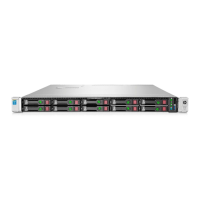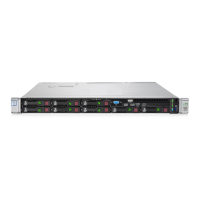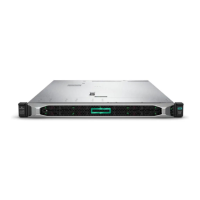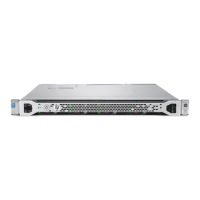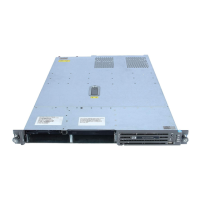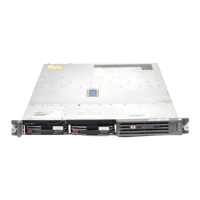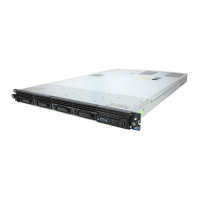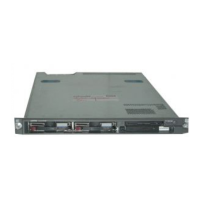Hardware options installation 57
The server supports either of the following:
• Battery-backed write cache (BBWC) options
BBWC consists of a cache module and a battery pack (also called a BBWC enabler). The DDR
cache module buffers and stores data being written by the controller. When the system power is on,
the battery pack continuously recharges through a trickle-charging process lasting 15 minutes to 2
hours, depending on the original charge. In the event of system power failure, a fully charged
battery pack can maintain the cached data for up to 72 hours.
• Flash-backed write cache (FBWC) options
FBWC consists of a cache module and a capacitor pack. The DDR cache module buffers and stores
data being written by the controller. When the system power is on, the capacitor pack charges fully
in about 5 minutes. In the event of a system power failure, a fully charged capacitor pack provides
power for up to 80 seconds. During that interval, the controller transfers the cached data from DDR
memory to flash memory, where the data remains indefinitely or until a controller retrieves the data.
CAUTION: Do not use this controller with cache modules designed for other controller
models, because the controller can malfunction and you can lose data. Also, do not transfer
this cache module to a different controller module, because you can lose data.
CAUTION: To prevent a server malfunction or damage to the equipment, do not add or
remove the battery pack while an array capacity expansion, RAID level migration, or stripe
size migration is in progress.
CAUTION: After the server is powered down, wait 15 seconds and then check the amber LED
before unplugging the cable from the cache module. If the amber LED blinks after 15
seconds, do not remove the cable from the cache module. The cache module is backing up
data, and data is lost if the cable is detached.
IMPORTANT: The battery pack might have a low charge when installed. In this case, a POST
error message is displayed when the server is powered up, indicating that the battery pack is
temporarily disabled. No action is necessary on your part. The internal circuitry automatically
recharges the batteries and enables the battery pack. This process might take up to four
hours. During this time, the cache module functions properly, but without the performance
advantage of the battery pack.
NOTE: The data protection and the time limit also apply if a power outage occurs. When
power is restored to the system, an initialization process writes the preserved data to the hard
drives.
Installing the cache module
CAUTION: In systems that use external data storage, be sure that the server is the first unit to
be powered down and the last to be powered back up. Taking this precaution ensures that
the system does not erroneously mark the drives as failed when the server is powered up.
1. Power down the server (on page 19).
2. Extend the server from the rack (on page 19).
3. Remove the access panel (on page 21).
